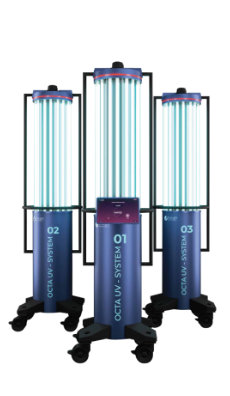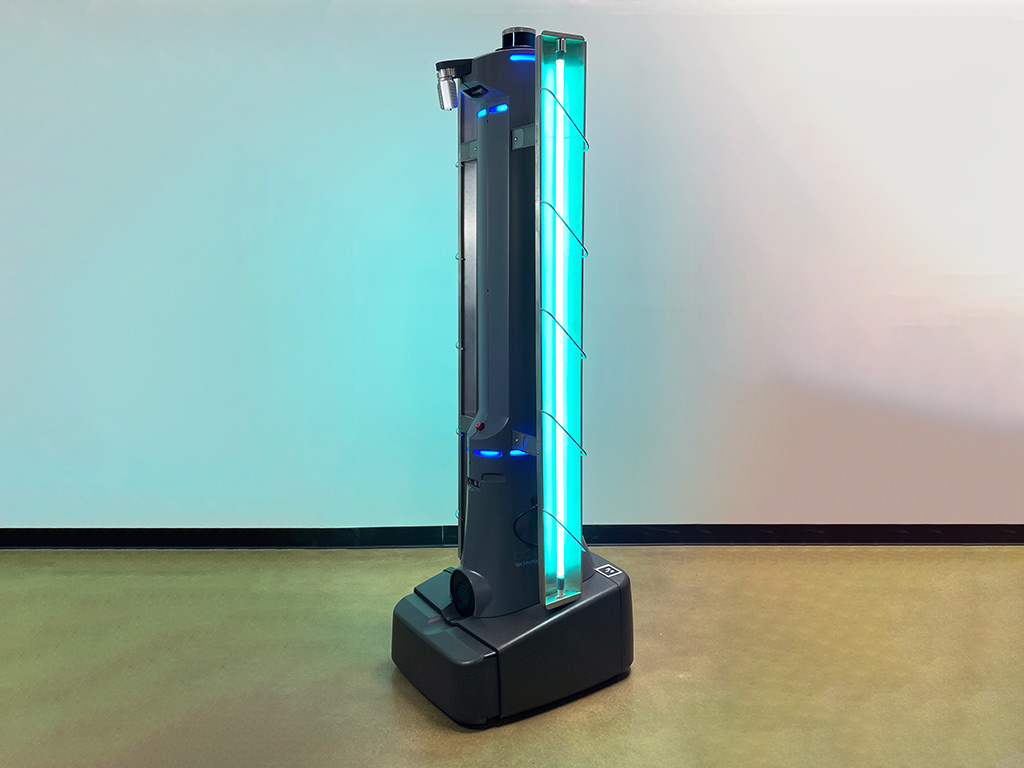Using the Power of UV Surface Disinfection: A Comprehensive Guide for Healthier Spaces
Using the Power of UV Surface Disinfection: A Comprehensive Guide for Healthier Spaces
Blog Article
Unveiling the Advantages of UV Disinfection: Making Sure Disinfected and tidy Spaces
While traditional cleaning methods have actually long been relied upon, innovations in technology have actually presented an ingenious remedy that makes sure clean and disinfected rooms: UV disinfection. Furthermore, we will delve right into the safety factors to consider that have to be taken into account when implementing UV disinfection. Prepare to discover a brand-new dimension of tidiness and discover the untapped capacity of UV disinfection.

The Science Behind UV Disinfection
UV sanitation is a medically tested method that utilizes ultraviolet light to remove damaging microbes from surface areas and water. The scientific research behind UV disinfection depends on the capacity of UV-C light to harm the DNA and RNA of microorganisms, rendering them not able to recreate and triggering their ultimate fatality. UV-C light drops within the wavelength variety of 200 to 280 nanometers, which is highly reliable in damaging bacteria, infections, and various other microorganisms.
When revealed to UV-C light, the hereditary product of bacteria soaks up the energy from the light, bring about the development of thymine dimers. These dimers interrupt the typical duplication and transcription procedures of the microbes, preventing their capacity to recreate and survive (uv surface disinfection). The DNA and RNA damages triggered by UV-C light is dangerous to the microorganisms, making UV disinfection a reliable and trustworthy approach for eliminating a wide variety of microorganisms
UV sanitation is particularly valuable in atmospheres where conventional chemical disinfectants may be unwise or inadequate. It is a non-chemical technique that does not leave any kind of deposits or hazardous byproducts, making it safe for usage in food processing, health care facilities, water therapy plants, and numerous other markets. Additionally, UV sanitation is eco pleasant, as it does not add to the advancement of antibiotic-resistant bacteria or various other dangerous contaminants.
Efficiency of UV Disinfection on Pathogens
The efficiency of UV sanitation in removing virus has actually been thoroughly studied and confirmed in countless clinical researches. UV radiation has the ability to inactivate a wide variety of bacteria, consisting of fungis, microorganisms, and viruses, by harming their DNA or RNA. This prevents them from reproducing and causing infections.
One study released in the American Journal of Infection Control found that UV disinfection worked in minimizing the presence of numerous drug-resistant bacteria in medical facility spaces. Another study conducted by the National Institute for Occupational Security and Wellness showed that UV disinfection had the ability to remove 99.9% of the flu infection on surfaces.
UV disinfection has actually also revealed promise in combating the spread of healthcare-associated infections (HAIs) According to a research released in The Lancet, making use of UV-C light along with typical cleansing procedures significantly reduced the occurrence of HAIs in a healthcare facility setup.
Additionally, UV disinfection has confirmed to be effective versus emerging microorganisms, such as the extreme intense respiratory system disorder coronavirus 2 (SARS-CoV-2), which triggers COVID-19. A research carried out by the National Emerging Transmittable Diseases Laboratories showed that UV-C light can inactivate the virus on surface areas within secs.
Applications of UV Disinfection in Various Settings
With its tried and tested performance in getting rid of microorganisms, UV sanitation has actually located applications in a range of settings. UV disinfection is likewise helpful website link in water therapy plants, where it is used to kill dangerous microbes and provide risk-free alcohol consumption water.
One more important application of UV disinfection is in the air purification industry. UV air purifiers are used in property, commercial, and commercial settings to remove air-borne microorganisms, viruses, and mold and mildew spores. This innovation is specifically helpful in atmospheres where individuals are extra vulnerable to respiratory infections, such as medical facilities, institutions, and office buildings.
Furthermore, UV disinfection is increasingly being utilized in public transport systems, such as trains and buses, to preserve clean and sanitized rooms for passengers. UV light is utilized to disinfect surfaces and air inside the automobiles, reducing the risk of spreading infectious diseases.
Advantages of UV Sanitation Over Traditional Techniques
In comparison to conventional approaches, UV sanitation uses a series of distinctive benefits that make it a preferable choice in various markets and setups. One considerable benefit is its performance against a wide range of microorganisms, including infections, bacteria, and fungis. Unlike chemical disinfectants that might have limited effectiveness against specific pathogens, UV disinfection is a non-selective procedure that can kill or suspend a broad spectrum of hazardous organisms.
An additional advantage of UV sanitation is its capacity to provide rapid and effective disinfection. Conventional disinfection approaches typically need longer get in touch with times or numerous steps to achieve the desired level of disinfection. On the other hand, UV light can offer prompt and continual sanitation, lowering downtime and increasing efficiency in various applications.
UV sanitation additionally offers a environmentally pleasant and safe choice to traditional disinfection approaches. uv surface disinfection. Unlike chemical agents, UV light does not leave behind any kind of damaging residues or by-products, making it appropriate for use in delicate atmospheres such as food processing facilities, healthcare setups, and water treatment plants
Additionally, UV disinfection is an economical service over time. While the upfront investment for UV disinfection systems might be greater than typical approaches, the operational expenses are typically reduced. UV lamps have a long life expectancy and call for minimal upkeep, resulting in decreased labor and substitute costs.
Safety Factors To Consider for UV Sanitation
Thinking about the possible threats related to UV disinfection, it is important to address the security considerations involved in executing this innovation. UV sanitation uses ultraviolet light to eliminate or inactivate bacteria, making it a reliable method for sanitizing different surfaces and items. Nevertheless, it is essential to recognize that UV radiation can also present risks to human health and wellness if proper security measures are not complied with.
Most importantly, direct exposure to UV radiation can create injury to the skin and click here now eyes. Long term exposure can lead to sunburn, skin damages, and even an enhanced risk of creating skin cancer. Consequently, it is vital to make certain that UV sanitation systems are effectively enclosed and outfitted with security features such as automated shut-off mechanisms or activity sensors to stop unintentional direct exposure.

In addition, appropriate training and education are important for those in charge of running UV disinfection systems. They need to know the prospective risks, comprehend the security protocols, and recognize exactly how to take care of and keep the devices properly.
Final Thought
UV disinfection can be applied in numerous settings, including medical care centers, food handling plants, and water treatment systems. Compared to standard approaches, UV disinfection has advantages such as faster sanitation times, minimal chemical use, and no hazardous results.
UV disinfection is a scientifically proven technique that uses ultraviolet light to get rid of harmful bacteria from surface areas and water. The DNA and RNA damage triggered by UV-C light is lethal to the microbes, making UV sanitation a reputable and efficient approach for killing a large array of microorganisms.
An additional benefit of UV sanitation is its capability to offer reliable and fast disinfection. UV sanitation makes use of ultraviolet light to kill or suspend microorganisms, making it an effective approach for sterilizing various surfaces and items. Contrasted to standard approaches, UV disinfection has advantages such as faster disinfection times, marginal chemical use, and no harmful results.
Report this page